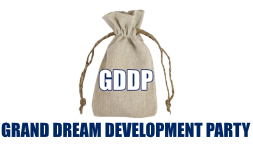The Rule of
Mwai Kibaki
2002 – 2012
Mwai Kibaki
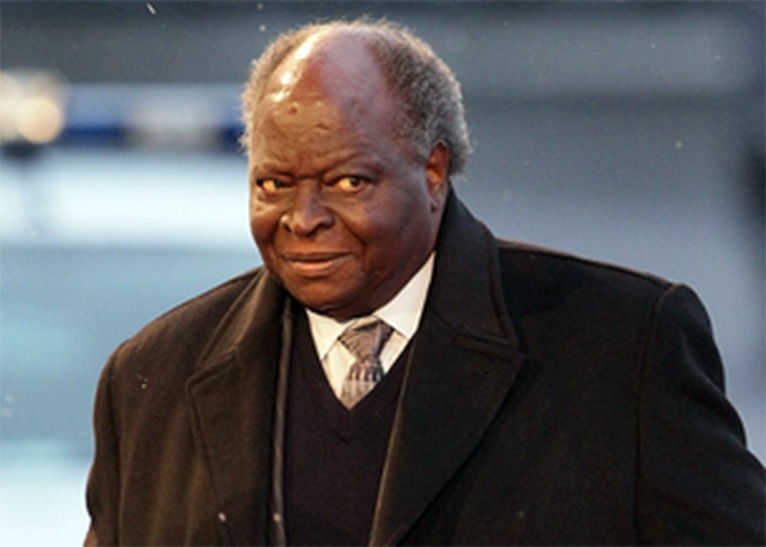

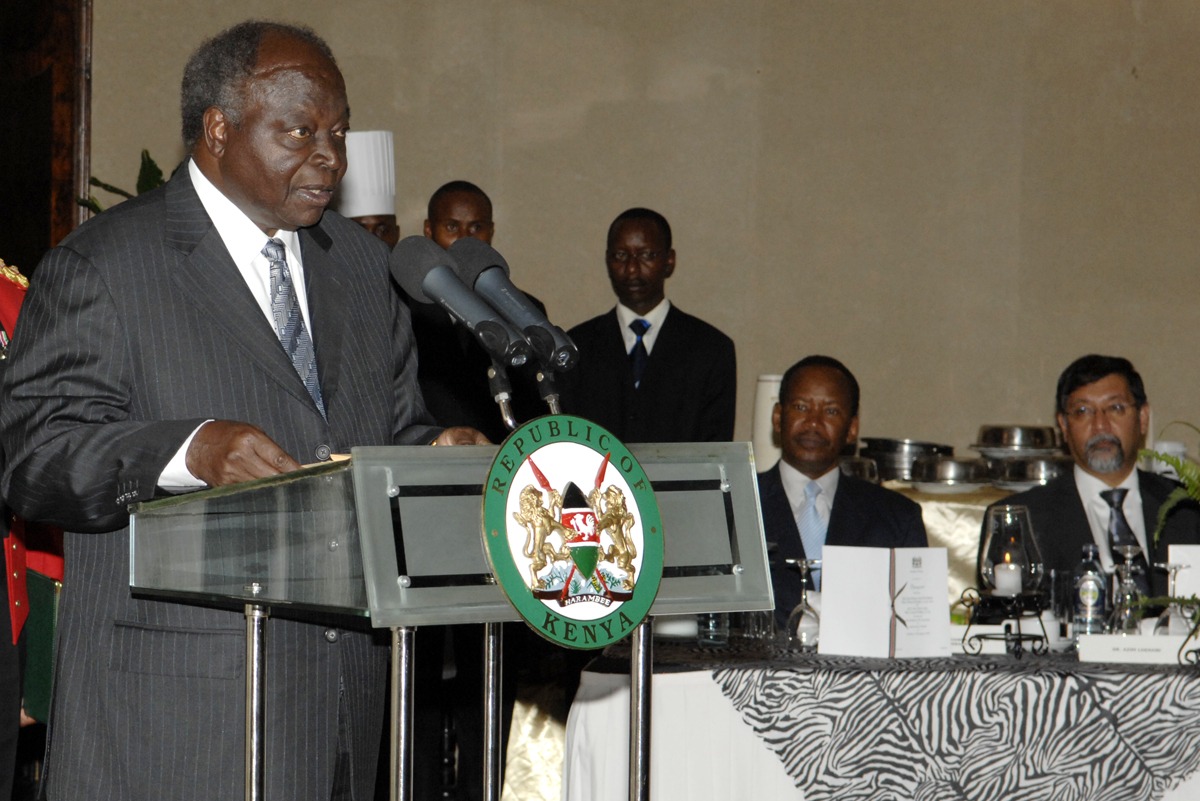
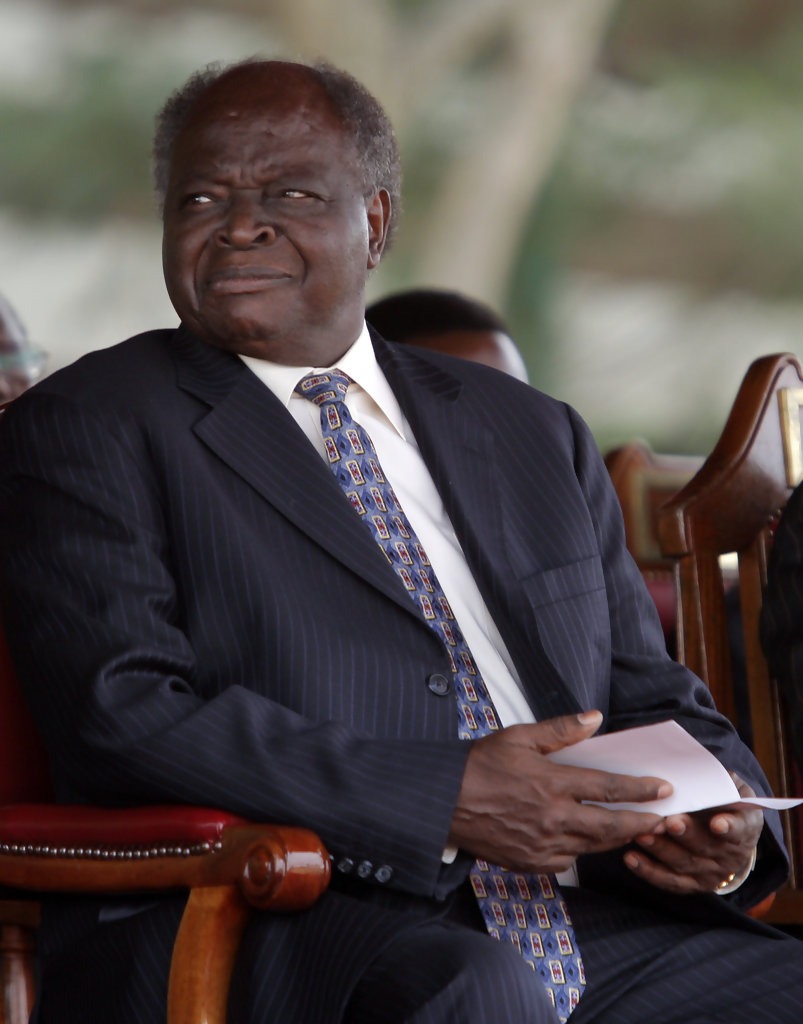
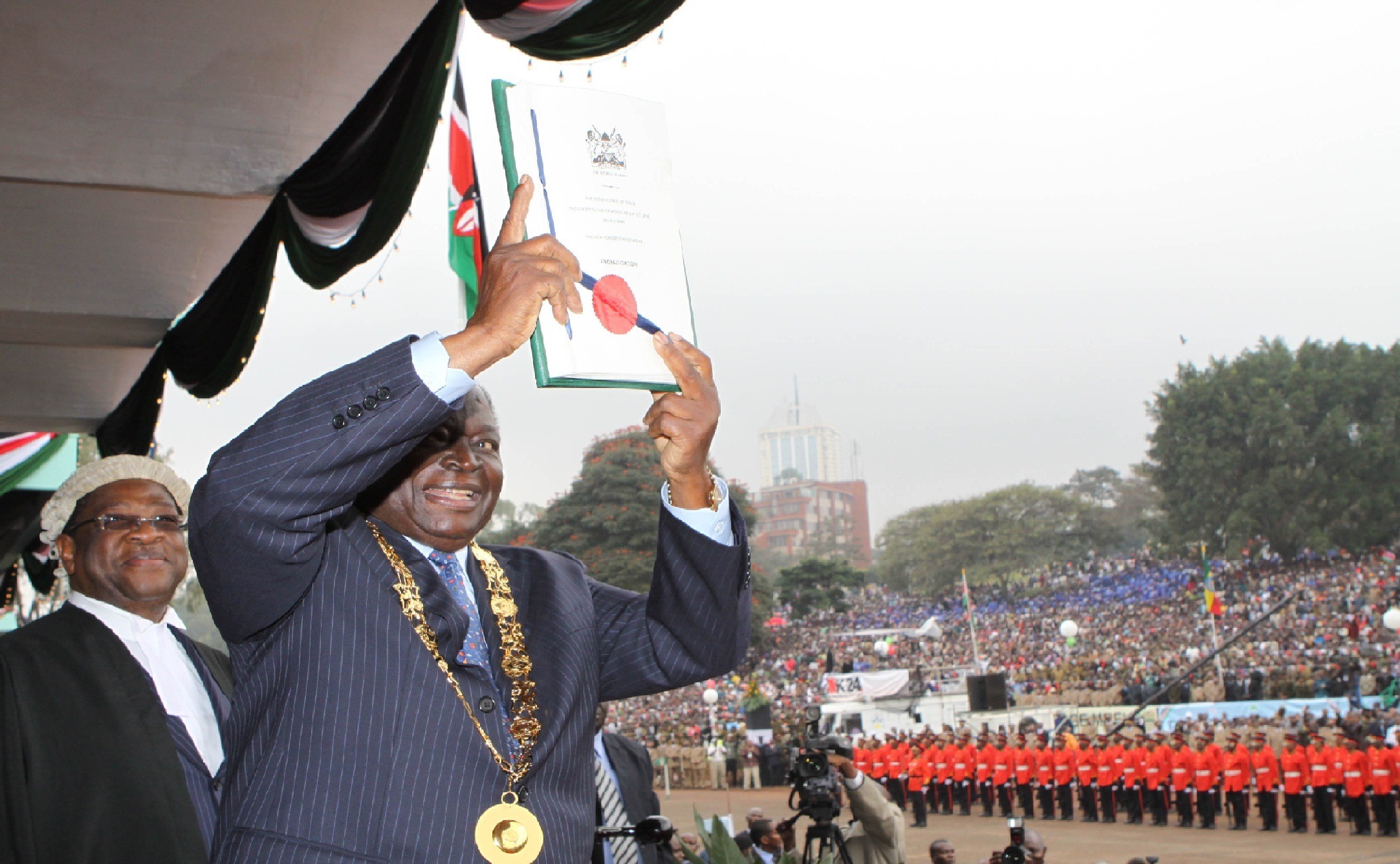
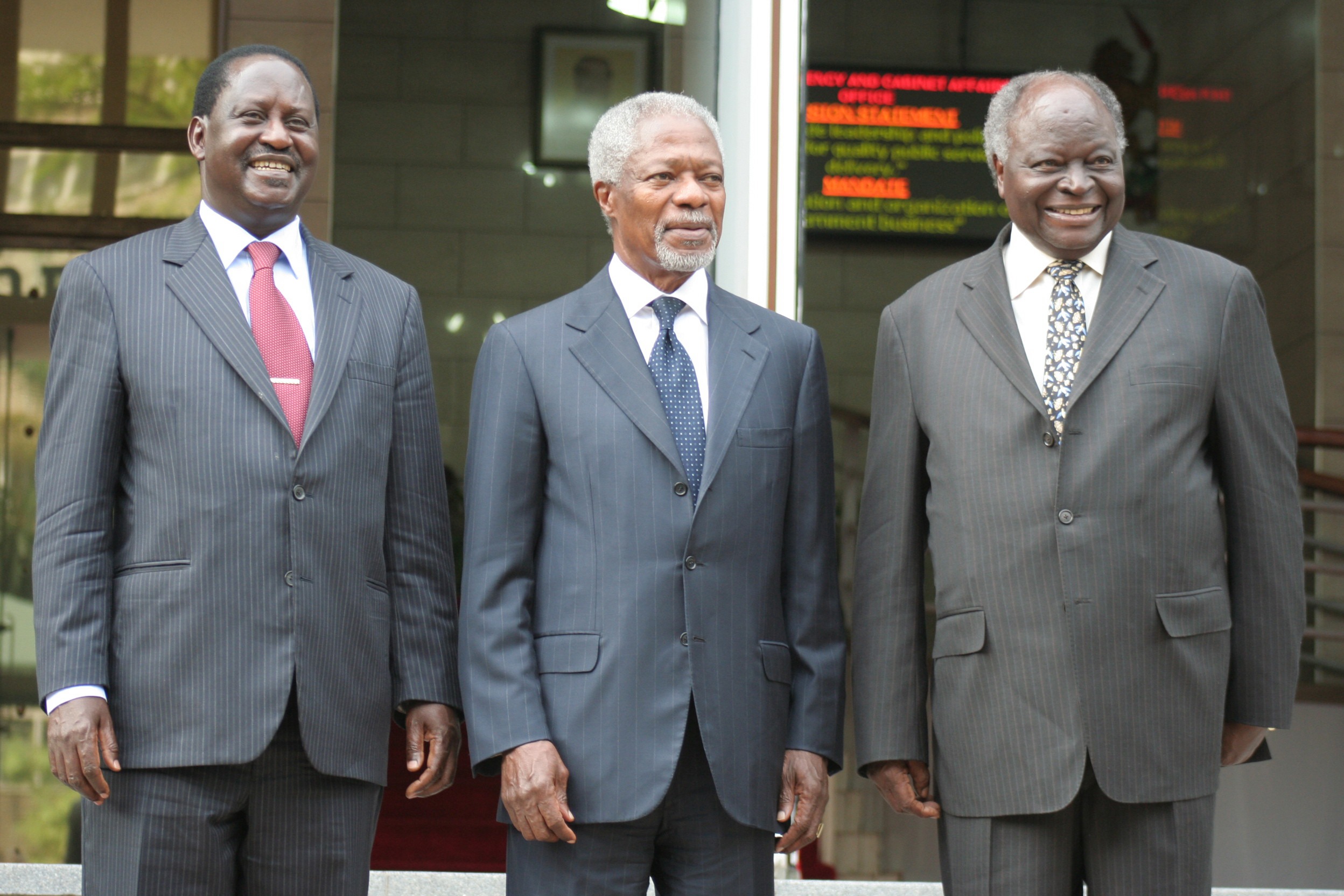
2002 – 2012
The Rule Mwai Kibaki
In preparation for the 2002 elections, Kibaki’s Democratic Party affiliated with several other opposition parties to form National Alliance Party of Kenya (NAK). A group of disappointed KANU presidential aspirants then quit KANU in protest after being overlooked by outgoing President Moi when Moi had founding Father Jomo Kenyatta’s son, Uhuru Kenyatta (now Kibaki’s successor as Kenya’s 4th President after the 2013 General Election), nominated to be the KANU presidential candidate, and hurriedly formed the Liberal Democratic Party (LDP). NAK later combined with the LDP to form the National Rainbow Coalition (NARC). On 14 October 2002, at a large opposition rally in Uhuru Park, Nairobi, Kibaki was nominated the NARC opposition alliance presidential candidate after Raila Odinga made the famous declaration, Kibaki Tosha!
On 3 December 2002, Kibaki was injured in a road accident while on his way back to Nairobi from a campaign meeting at Machakos junction 40 kilometres (25 miles) From Nairobi. He was subsequently hospitalized in Nairobi, then London, after sustaining fracture injuries in the accident. He still walks rather awkwardly as a result of those injuries. The rest of his presidential campaign was thus conducted by his NARC colleagues in his absence, led by Raila Odinga and Kijana Wamalwa (who went on to become the Vice President) who campaigned tirelessly for Kibaki after stating, “The captain has been injured in the field… but the rest of the team shall continue.”
On 27 December 2002, Kibaki and NARC won a landslide victory over KANU, with Kibaki getting 62% of the votes in the presidential elections, against only 31% for the KANU candidate Uhuru Kenyatta.
2003: Free primary education
In January 2003, Kibaki introduced a free primary education initiative, which brought over 1 million children who would not have been able to afford school the chance to attend. The initiative received positive attention, including praise from Bill Clinton, who would travel to Kenya to meet Kibaki.
2005: Constitutional referendum, the NARC fallout and government of national unity
The 2005 Kenyan constitutional referendum was held on 21 November 2005. The main issue of contention in the Constitution review process was how much power should be vested in the Kenyan Presidency. In previous drafts, those who feared a concentration of power in the president added provisions for European-style power-sharing between a ceremonial President elected via universal suffrage and an executive Prime Minister elected by Parliament. The draft presented by the Attorney General Amos Wako for the referendum retained sweeping powers for the Presidency.
Though Kibaki the proposal, some members of his own cabinet, mainly from the LDP wing led by Raila Odinga, allied with the main opposition party KANU to mobilize a powerful NO campaign that resulted in a majority of 58% of voters rejecting the draft.
As a consequence of, and immediately after, the referendum loss, on 23 November 2005, Kibaki dismissed his entire cabinet in the middle of his administration’s term, with the aim of purging all Raila-allied ministers from the cabinet. About his decision Kibaki said, “Following the results of the Referendum, it has become necessary for me, as the President of the Republic, to re-organize my Government to make it more cohesive and better able to serve the people of Kenya”. The only members of the cabinet office to be spared a midterm exit were the Vice President and Minister of Home Affairs, Moody Awori, and the Attorney General whose position is constitutionally protected. A new cabinet of Kibaki loyalists, including MP’s from the opposition, termed the Government of National Unity (GNU), was thereafter appointed, but some MP’s who were offered ministerial positions declined to take up posts.
A report by a Kenyan Commission of Inquiry, the Waki Commission, contextualises some issues. They reported that Kibaki, after agreeing to an informal Memorandum of Understanding (MoU) to create the post of Prime Minister, reneged on this pact after being elected. They cite criticism of Kibaki neglecting his pre-election agreement, leaving the public to identify it as an attempt by the Kibaki Government to “keep power to itself rather than share it.”
2007: Elections
On 26 January 2007, President Kibaki declared his intention of running for re-election in the 2007 presidential election. On 16 September 2007, Kibaki announced that he would stand as the candidate of a new alliance incorporating all the parties who supported his re-election, called the Party of National Unity. The parties in his alliance included the much diminished former ruling KANU, DP, Narc-Kenya, Ford-Kenya, Ford People, and Shirikisho.
Kibaki’s main opponent, Raila Odinga, had used the referendum victory to launch the ODM, which nominated him as its presidential Candidate for the 2007 elections.
On 30 September 2007, a robust and much healthier President Kibaki launched his presidential campaign at Nyayo Stadium, Nairobi.
Kalonzo Musyoka then broke away from Raila’s ODM to mount his own fringe bid for the presidency, thus narrowing down the contest between the main candidates, Kibaki, the incumbent, and Odinga. Opinion polls up to election day showed Kibaki behind Raila Odinga nationally, but closing. On regional analysis, the polls showed him behind Raila in all regions of the country except Central Province, Embu and Meru, where he was projected to take most of the votes, and behind Kalonzo Musyoka in Kalonzo’s native Ukambani. It was thus projected to be a close election between Kibaki and Raila.
The election was held on 27 December 2007. Kibaki won and was sworn in what remains to be a contentious issue at twilight.
2007–2008: Results dispute and post-election violence
Three days later, after a protracted count which saw presidential results in Kibaki’s Central Kenya come in last, allegedly inflated, in a cloud of suspicion and rising tensions, amid vehement protests by Raila’s ODM, overnight re-tallying of results and chaotic scenes, all beamed live on TV, at the national tallying center at the Kenyatta International Conference Center in Nairobi, riot police eventually sealed off the tallying Center ahead of the result announcement, evicted party agents, observers and the media, and moved the Chairman of the Electoral Commission, Samuel Kivuitu, to another room where Kivuitu went on to declare Kibaki the winner by 4,584,721 votes to Odinga’s 4,352,993, placing Kibaki ahead of Odinga by about 232,000 votes in the hotly contested election with Kalonzo Musyoka a distant third.
One hour later, in a hastily convened dusk ceremony, Kibaki was sworn in at the grounds of State House Nairobi for his second term, defiantly calling for the “verdict of the people” to be respected and for “healing and reconciliation” to begin. This arose tension and led to protests by a huge number of Kenyans who felt that Kibaki had refused to respect the verdict of the people and was now forcibly remaining in office.
Immediately the results were announced, Odinga bitterly accused Kibaki of electoral fraud. Odinga’s allegations scored with his supporters, and seemed meritorious since the results had defied pre-election polls and expectations and election day exit polls.Furthermore, Odinga, who had campaigned against the concentration of political power in the hands of Kikuyu politicians, had won the votes of most of the other Kenyan tribes and regions, with Kibaki’s victory being attained only with the near exclusive support of the populous Kikuyu, Meru and Embu communities-who had turned up to vote for Kibaki in large numbers after feeling, in reaction to the Odinga campaign, and with the covert encouragement of the Kibaki campaign, increasingly besieged and threatened by the pro-Odinga tribes. Moreover, ODM had won the most parliamentary and local authority seats by a wide margin. A joint statement by the British Foreign Office and Department for International Development cited “real concerns” over irregularities, while international observers refused to declare the election free and fair. The European Union chief observer, Alexander Graf Lambsdorff, cited one constituency where his monitors saw official results for Kibaki that were 25,000 votes lower than the figure subsequently announced by the Electoral Commission, leading him to doubt the accuracy of the announced results.
It was reported that Kibaki, who had previously been perceived as an “old-school gentleman”, had “revealed a steely side” when he swore himself in within an hour of being announced the victor of the highly contested election—one where the results were largely in question. Odinga’s supporters said he would be declared president at a rival ceremony on Monday, but police banned the event. Koki Muli, the head of local watchdog, the Institute of Education in Democracy, said called the day the “saddest…in the history of democracy in this country” and “a coup d’etat.”
Opposition supporters saw the result as a plot by Kibaki’s Kikuyu tribe, Kenya’s largest, to keep power by any means. The tribes that lost the election were upset at the prospect of five years without political power, and anti-Kikuyu sentiment swelled, spawning the 2007–2008 Kenyan crisis, as violence broke out in several places in the country, started by the ODM supporters protesting the “stealing” of their “victory”, and subsequently escalating as the targeted Kikuyus retaliated. As unrest spread, television and radio stations were instructed to stop all live broadcasts. There was widespread theft, vandalism, looting and destruction of property, and a significant number of atrocities, killings and sexual violence reported.
The violence continued for more than two months, as Kibaki ruled with “half” a cabinet he had appointed, with Odinga and ODM refusing to recognize him as president.
When the election was eventually investigated by the Independent Review Commission (IREC) on the 2007 Elections chaired by Justice Johann Kriegler, it was found that there were too many electoral malpractices from several regions perpetrated by all the contesting parties to conclusively establish which candidate won the December 2007 Presidential elections. Such malpractices included widespread bribery, vote buying, intimidation and ballot stuffing by both sides, as well as incompetence from the Electoral Commission of Kenya(ECK), which was shortly thereafter disbanded by the new Parliament.
2008: National accord and Grand Coalition Government
The Country was only saved by the mediation of former United Nations Secretary General Kofi Annan with a Panel of “Eminent African Personalities” backed by the African Union, the United States and the United Kingdom.
Following the mediation, a deal, called the national accord, was signed in February 2008 between Raila Odinga and Kibaki, now referred to as the “two Principals”. The accord, later passed by the Kenyan Parliament as the National Accord and Reconciliation Act 2008provided inter alia for power-sharing, with Kibaki remaining President and Raila Odinga taking a newly re-created post of Prime Minister.
On 17 April 2008, Raila Odinga was sworn in as Prime Minister, along with a power-sharing Cabinet, with 42 ministers and 50 assistant ministers, Kenya’s largest ever. The cabinet was fifty percent Kibaki appointed ministers and fifty percent Raila appointed ministers, and was in reality a carefully balanced ethnic coalition. The arrangement, which also included Kalonzo Musyoka as Vice President, was known as the “Grand Coalition Government”.
The Legacy of President Mwai Kibaki
Read the Latest Kenyan News.
Shaping the Political Front
News
